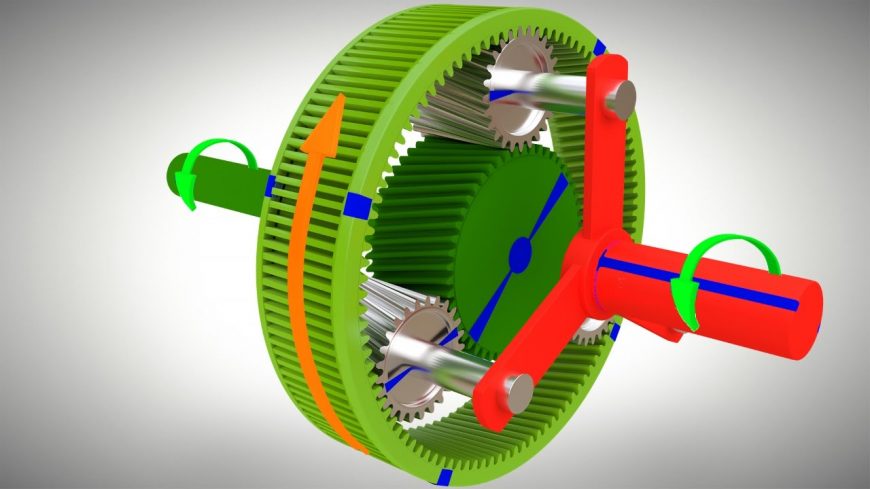Understanding How a Planetary GEAR System Works!

Transmissions have always seemed a lot like magic to me, in that they just don’t make sense, but I know they work because I see them with my own eyes. In actuality, transmissions are much less wizardry and just a lot of physics, some of which we are going to dive into today.

Most modern automatic transmissions use a system of planetary gears, a name derived from the fact that they look similar to a miniature – and simplified – solar system. There’s a sun gear, located at the center of the grouping, a trio of planet gears that orbit around the sun gear, and a ring gear that serves the function of gravity in holding everything together. Breaking things down individually helps understand the forces at work in one of the more important components in your car.

By changing the input speed and locking or unlocking the carrier, it is possible to achieve three different outputs: low speed, high speed, and reverse. These outcomes just happen to be perfect for an automotive application where all of those outputs are needed. Within the transmission itself, there are multiple sets of planetaries, allowing a great number of variable outputs that ensure smooth and linear acceleration. While they certainly aren’t something you want to tear into on a Saturday afternoon, seeing them broken down and simplified like this definitely helps to understand how they work. What’s not shown in the countless smaller components that are at work inside the transmission to make it function. However, at it’s core, this is the main piece of the the transmission and thanks to this clip, we hope you can have a better understanding of how things work inside your car’s transmission. Just think about this next time you pull out of your driveway and feel that transmission shift smoothly from gear to gear as you go about your day.

